Mars One fights off criticism and asks for $ 15 million
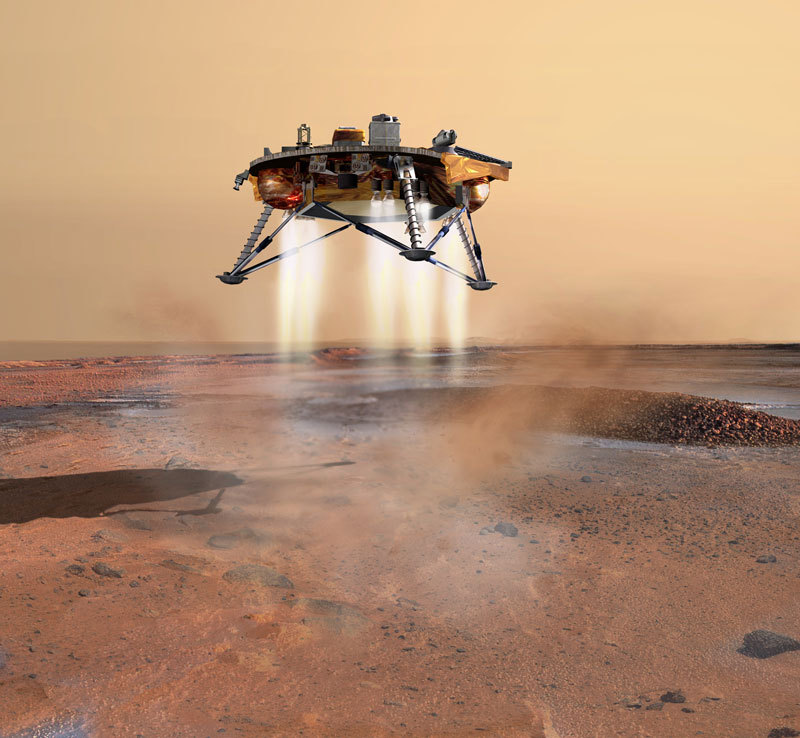 In August, Mars One head Bas Lansdorp discussed with two aerospace engineers at the Massachusetts Institute of Technology how feasible the company's mission is. Towards the end of the argument, it became clear that Mars One does not have a clear definition of its plans and the concept of “plan” in general. These dates, which have already moved twice, are more likely to be seen as dreams or a source of inspiration. At the moment, Mars One is trying to find funds for additional research and recruitment. The requested amount is $ 15 million.
In August, Mars One head Bas Lansdorp discussed with two aerospace engineers at the Massachusetts Institute of Technology how feasible the company's mission is. Towards the end of the argument, it became clear that Mars One does not have a clear definition of its plans and the concept of “plan” in general. These dates, which have already moved twice, are more likely to be seen as dreams or a source of inspiration. At the moment, Mars One is trying to find funds for additional research and recruitment. The requested amount is $ 15 million.Mars One is a company that received worldwide media attention in 2012 with its ambitious plan to conquer the red planet. This is not just the landing of a small probe or rover on Mars, it is not even the landing of a person, it is the creation of a permanent settlement. It was proposed to create a colony on the basis of volunteers selected from among ordinary people. A feature of the program is fatality: plans for the return of the colonists from Mars are not provided. For the rest of their lives, project participants are forced to live on Mars. According to the original plan, the colony should begin in 2023, when the first people arrive on the planet. It was this closeness and chance for each person to participate in a historical event that so fascinated everyone familiar with the project.
A tiny amount by the standards of the aerospace industry for landing on Mars - $ 6 billion - is proposed to be collected using television programs in the format of a reality show and broadcasting all stages on television. There are no data on Mars One contracts with television companies. The colony must be self-sustaining: for example, the colonists will feed on locally grown food, and oxygen for respiration will be extracted from the ground. Only spare parts and equipment will be sent. The first four will arrive at the moment in 2027. Like everyone else, this date has already shifted: first from 2023 to 2025, and then to 2027. Delivery is planned using SpaceX rockets, in particular Falcon Heavy. At the moment, there has not been a single launch of this version of the Falcon 9.
In 2013, 202,586 people received data during online registration. These are the same 200 thousand members of Mars One that are often mentioned. In fact, these are just verified email addresses. Later, the fact of overstating the number of participants and the selection process itself was criticized.. Only 4227 (according to other sources - 2761) people paid registration fees. After that, they were given access to the website in the form of a social networking service, on which they were asked to fill out questionnaires and talk about motivation in the videos. After passing this stage, only 1058 people remained, with whom the second round of selection began. As part of it, it was necessary to undergo a medical examination by your own therapist and agree to publish a completed profile. The interview following these two steps involved only 660 people. Gradually, the final 100 participants were selected.
The project was immediately subjected to harsh criticism because of the unrealistic promise. Back in 2012, Wired magazine putMars One plans have a 2 out of 10 credibility score. An independent technical analysis by the Massachusetts Institute of Technology says that colonists will die approximately 68 days after landing due to low oxygen partial pressure. The habitat will also be at risk of fire due to the high molar fraction of oxygen. Even if this does not happen, the burden of maintaining the colony will increase exponentially due to the need to send equipment for repair. Mars One remarks that although the study contains criticism, it considers the mission as possible. But researchers disprovethis statement: “To fully clarify the situation: the plan of the Mars One mission, as described on their website and elsewhere by Mr. Lansdorp and others, is not feasible.” And in an interview with Mars One employee, Dr. Norbert Kraft calls [at 3:50] the study “fake and fabricated.”
In August, at the annual meeting of the Martian Community, a discussion was held on the feasibility of the Mars One project. On the one hand were the head of the company Bas Lansdorp and aerospace consultant Barry Finger of Paragon Space Development Corporation. The latter recently conducted a study for Mars One.life support system needs. The views of Mars One were opposed by Sidney Doo and Andrew Owens, who are the authors of the above MIT study. Their new analysis uses the declared value of the program ($ 6 billion) from the perspective of the “iron triangle” of project management. The triple limitation or “iron triangle” describes the balance between the content (goals), cost and project lead time. (Quality is not considered here.) Changing one side of the triangle affects the other sides. An executable project is one in which goals are achieved for acceptable limits on cost and lead time. So, Mars One declares
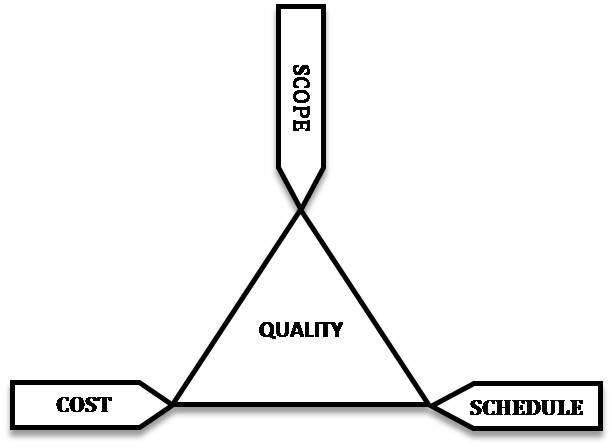
: in order to deliver four people by 2027 (12 years from now) to the surface of Mars, we need 6 billion dollars. For each subsequent two years, it is planned to send four more and spend $ 4 billion. The cost is 6 billion dollars and 4 every two years. The goal is the creation of a colony on Mars. Time is 2027. Key research question: Can Mars One implement the project with these limitations?
The arguments of Mars One are well known. Regarding time, Lansdorp said: when they sent a man to the moon, NASA had less time. Regarding the target, it is often mentioned that Mars One plans use existing technologies: there are both missiles and landing systems. Landing systems are similar to those used for the Curiosity rover, and life support systems resemble those used on the International Space Station.
However, this is not entirely true. Large image size is available by click. Space today is not the lot of only government agencies, so it’s easy to find what to compare the grandiose designs of Mars One with. There is also doubt about the existence and accessibility of technology.
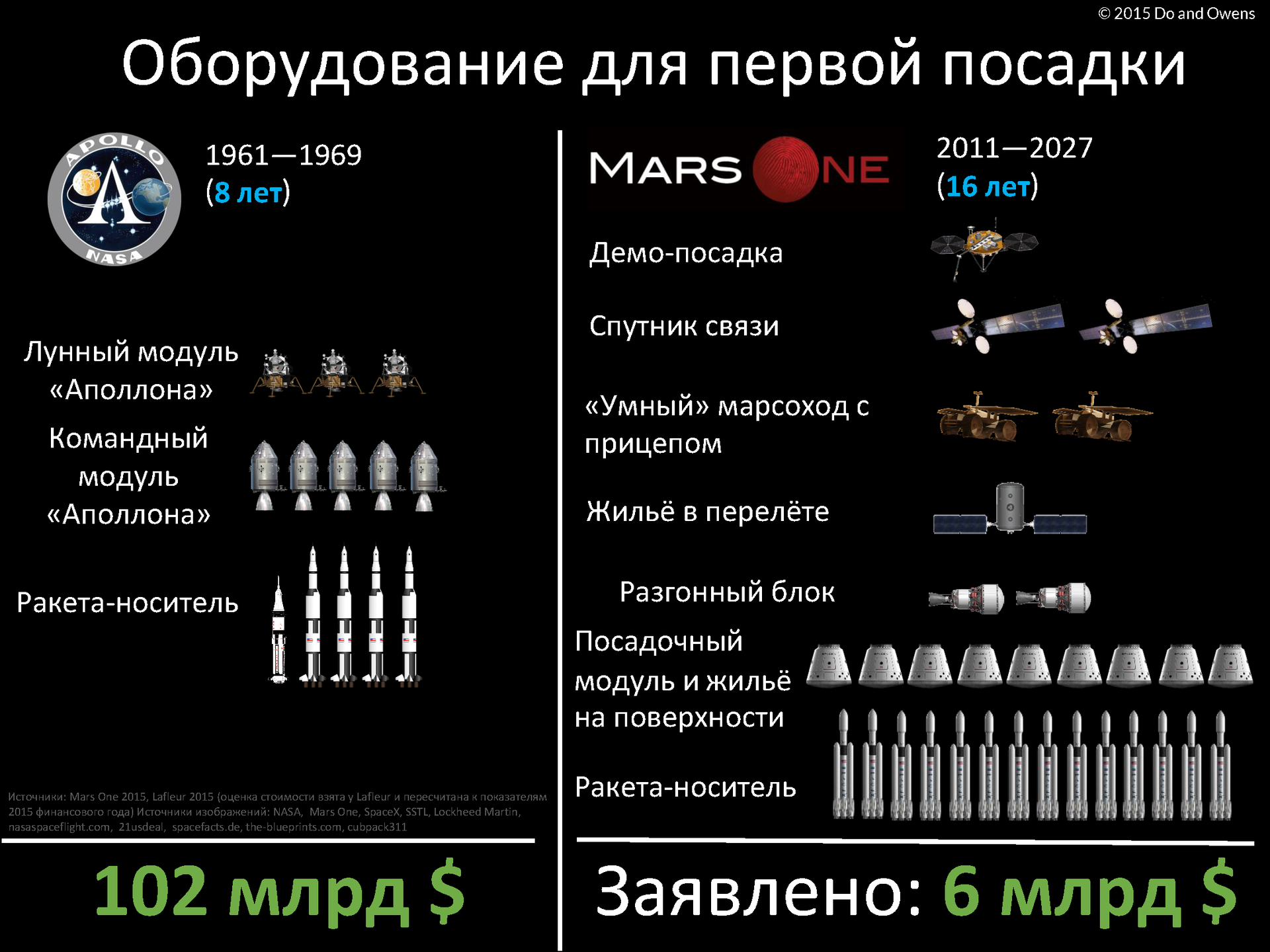

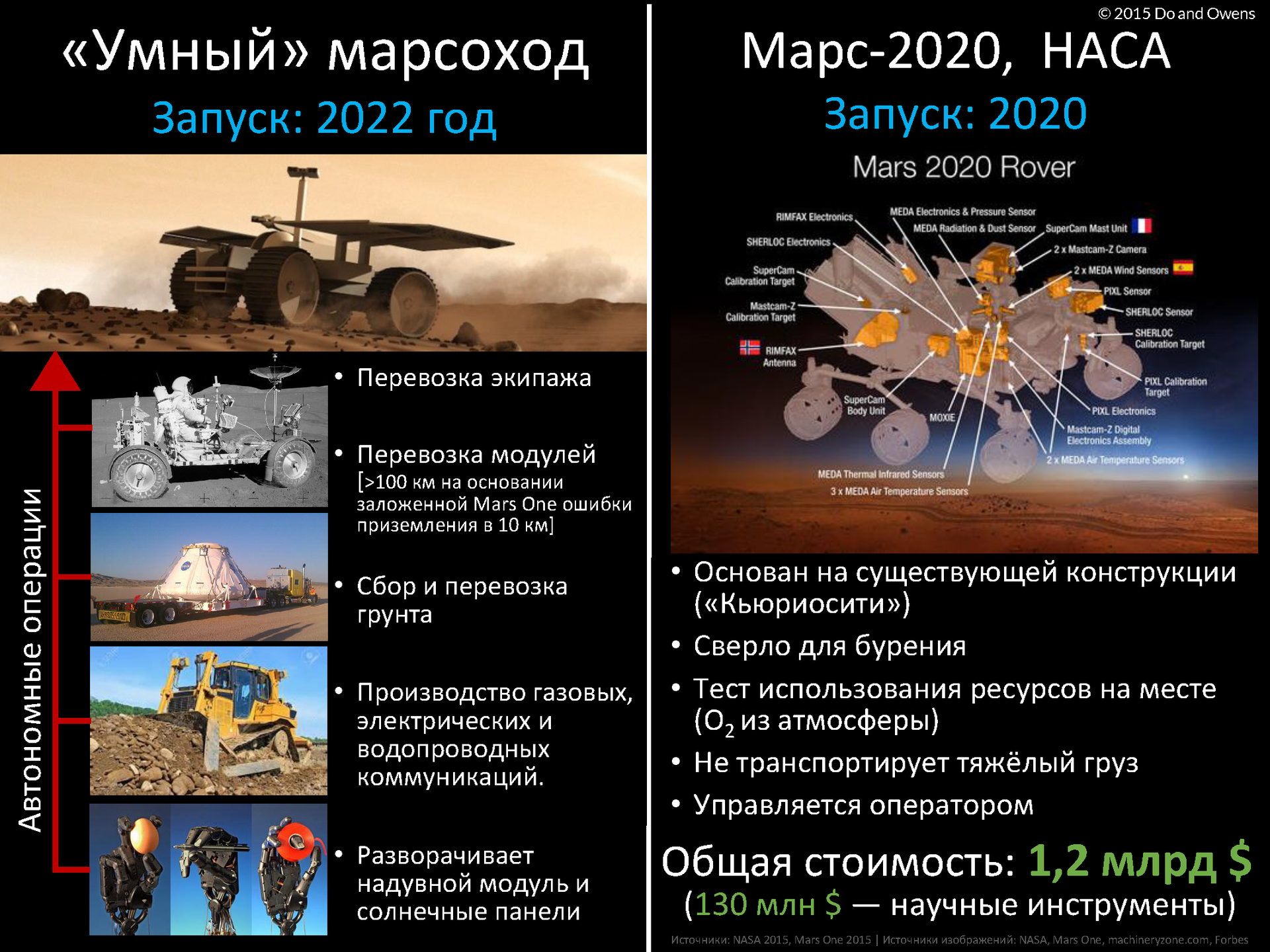
Landing is not so simple. Until that moment, exclusively unmanned aerial vehicles were planted on the surface of the red planet. The largest of them is the Curiosity rover. Its mass is 899 kilograms. The “smart” Mars One rover will weigh 2500 kilograms, another 4200 is the dry weight of the Dragon capsule. In total, it is 6700 kilograms, 7.5 times more than the "Curiosity". The rover will prepare a place for the colony. A capsule with a life support system will weigh 7434 kilograms. This is more than the total mass of all the devices that have successfully landed on Mars in history. For the implementation of the plans Mars One needs a real leap.
The smart Mars rover and other Mars One systems must also have unprecedented reliability. As a rule, the ISS spends about 3 months without additional supply. You can add the necessary parts or entire blocks of broken life support systems to the space truck and send it to the station. Mars One equipment will not receive new parts for about 26 months, 8.7 times more. As a result, the situation will resemble a logistics nightmare, in which there is much less supply needed, even in conditions of 2 times more reliable equipment. Without production facilities on Mars, a one-way ticket strategy is not feasible.
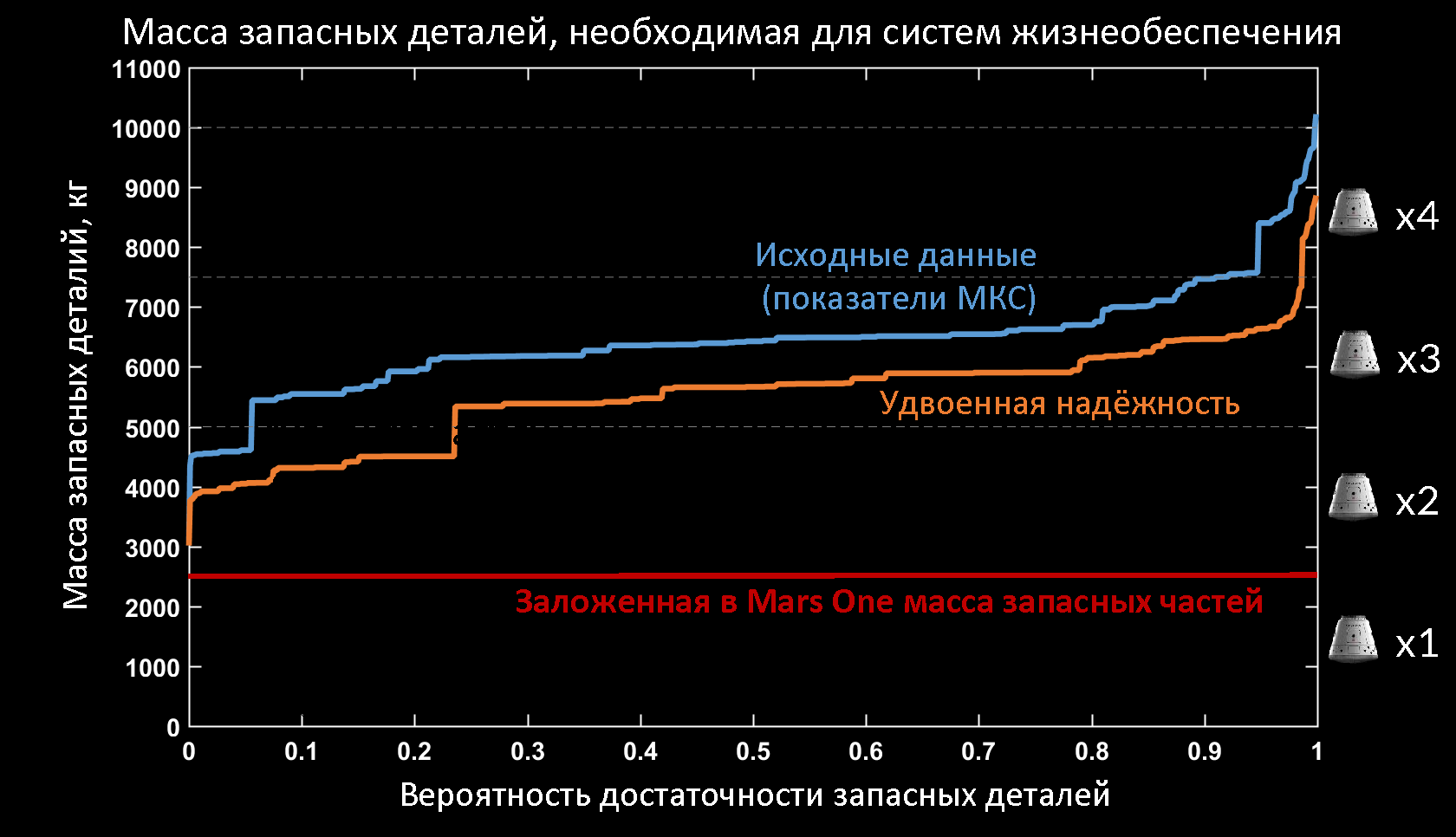
The analysis also touched on the research of Paragon Corporation: according to the researchers, it affects only goals, but not cost and lead time. Researchers also provide direct citations to the analysis performed by Barry Finger. It states that it will take considerable time to create production capacities. The base for production and there is considered mandatory to achieve a permanent settlement.
In response, Lansdorp said that the goal of Mars One is not to send people to Mars in 2027 for $ 6 billion and for 14 launches. The goal is just landing on Mars. Then he repeated the same mysterious phrase that was said about the previous study: the analysis of Andrew and Sydney, on the contrary, confirms the plan of Mars One.
Lansdorp's presentation contained only one slide, which demonstrated changes in the concepts of Apollo, the device that delivered people to the moon. He said that Mars One plans are based on preliminary work and may change over time with the advent of new data. As an example, Lansdorp cited a recent Paragon study, which claims that the mass of the life support system will be higher than expected. Now, Mars One is seeking $ 15 million to finance the building of the team and additional research at Lockheed Martin on atmospheric entry, descent and landing systems. Lansdorp was optimistic that perhaps some billionaire would appear who would finance the whole undertaking, which would speed up the work.
The most frightening argument that voicedDoo, there was no impracticability of the Mars One projects. It was a remark that if the project was blown away loudly, in the future any even the most plausible attempt to conquer Mars would be perceived ambiguously.
Presentation slides with Mars One rating from the Iron Triangle position
